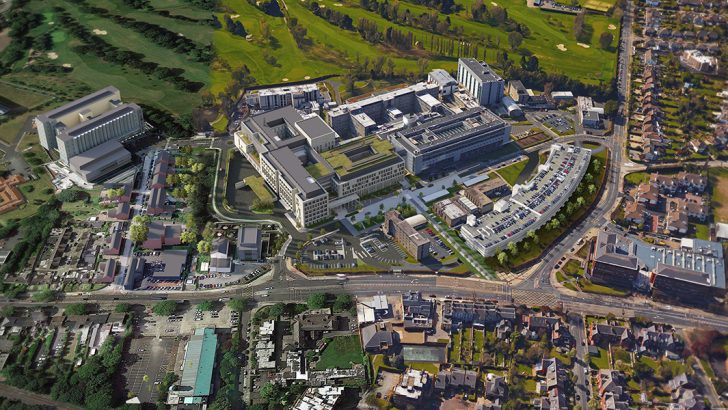The Church should be lobbying for a swifter return to public worship, writes David Quinn
For the first time in the history of Christianity, churches have been closed across much of Europe to public Masses and other religious ceremonies. But the picture varies, and the speed at which public worship is being restored from country to country also varies.
For example, Poland never forbade public Masses. They have continued right through the pandemic to date, although under conditions of strict social distancing, meaning only five people present at any one Mass. As strict as this is, they had the freedom to do so because east European countries in general have been less badly affected by the virus than western European countries. On the other hand, the continuation of public Masses in Poland has not led to a wider spreading of the disease there.
In the Netherlands, which is far more secular than Poland, and which has had a much worse outbreak, they have not forbidden public worship either. They have simply limited gatherings to no more than 30 people.
In fact, the Churches have gone further than this anyway, and have cancelled public religious ceremonies expect for weddings and funerals under the limit of 30 people or less.
Statements
But the point is that they could have public ceremonies if they wanted. They simply choose not to.
Sweden has never stopped public worship either. Up to 50 can gather in a church, and Sweden, like the Netherlands, is very secular.
Countries like Italy and France also had worse outbreaks than Ireland. The virus also took hold in those countries quicker than here, but at the same time they are allowing public worship again much soon.
A recent poll showed that 24% of Irish people want a return to public religious ceremonies as soon as possible”
Here the date scheduled for the return of public worship is July 20. But in France the date is June 2, and in Italy it is May 18. In all cases, social distancing will apply.
Originally, the Italian Government had scheduled a later return date for Masses, but the bishops pushed back in a public statement released on April 26.
They said the Government plan, “arbitrarily excludes the possibility of celebrating Mass with the people”.
That very night, the Italian Government reacted by announcing that a protocol would be studied to allow “the Faithful to participate in liturgical celebrations as soon as possible in conditions of maximum security”.
That protocol was soon devised and released declaring May 18 as the return date. It lays out the safety measures and has been approved by the Italian health authorities.
Meanwhile, public Masses begin again in Austria this week and in Germany they began at the start of the month, again with social distancing. Cologne cathedral, for example, permitted 120 people out of a possible 800 to attend Mass.
Here in Ireland, the bishops are working on plans for a safe return to public Masses but at the time of writing, no plan has been made public. (The American bishops have published a 23-page plan.) Nor do they appear to be lobbying the Government, the way the Italian bishops did, for a safe, earlier return than July 20.
On the other hand, publicans, hairdressers, etc. are lobbying for an earlier return than the present schedule.
A recent Amarach poll showed that 24% of Irish people want a return to public religious ceremonies as soon as possible, putting it in the top five for re-opening and far ahead of the number of people who want pubs or restaurants re-opened. This is despite the lack of coverage in the media of the suspension of public worship.
In fact, when you think about it, churches are some of the easiest places in which to maintain social distancing rules.
A church that fits 400 people, for instance, would celebrate Mass in front of 40 people. Churches frequently have the luxury of space.
Hopefully the bishops will come up with a suitable, published plan for a safe, earlier return to public Masses than July 20 and will learn from bishops overseas how to do this.
No fanfare, less gratitude…
A big story that received little attention last week was the agreement by the Vatican to the handing over of land by the Religious Sisters of Charity for the purposes of building the new National Maternity Hospital right beside St Vincent’s in Dublin 4. The site is worth an estimated €200m and it has been provided for nothing to the body that will now own the land.
If you remember, when it was originally announced that the new maternity hospital would be built on land owned by nuns there was the usual outbreak of anti-Catholic hysteria.
The nuns found themselves totally demonised, yet again.
There were demonstrations against the move, petitions signed, ritualistic condemnations in the Dáil and dire warnings that the nuns would be ‘interfering’ with women’s healthcare in the most horrible ways.
Laws
Forgotten was the fact that the Sisters of Charity founded Ireland’s first ever hospital for women back in 1834, namely the original St Vincent’s on St Stephen’s Green. They built it about as soon as possible after the lifting of the final Penal Laws. Now the land has been given for free and with almost no fanfare and less gratitude.
The real tragedy, of course, is that abortions will be taking place on land until recently owned by an order of nuns.
The order’s founder, Mary Aikenhead, must be turning in her grave.


 David Quinn
David Quinn
